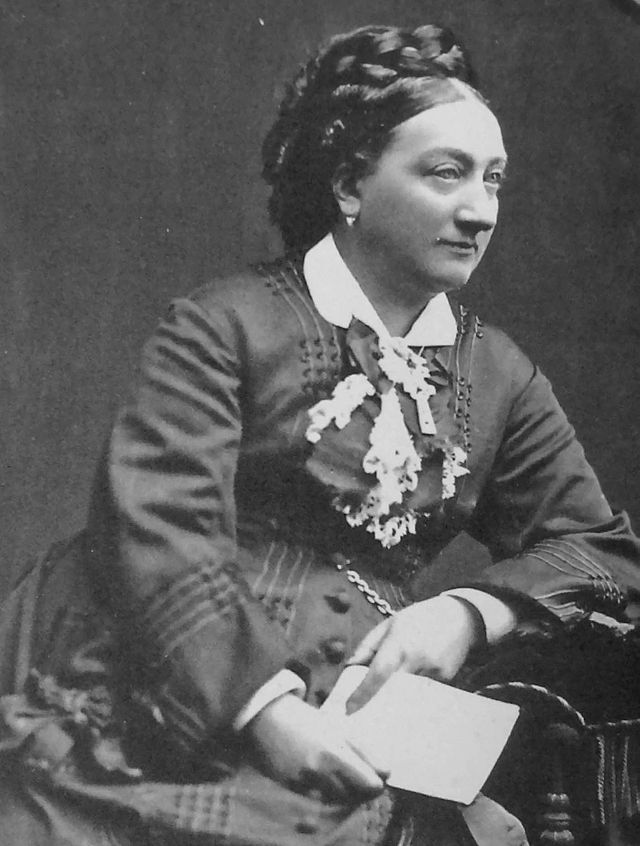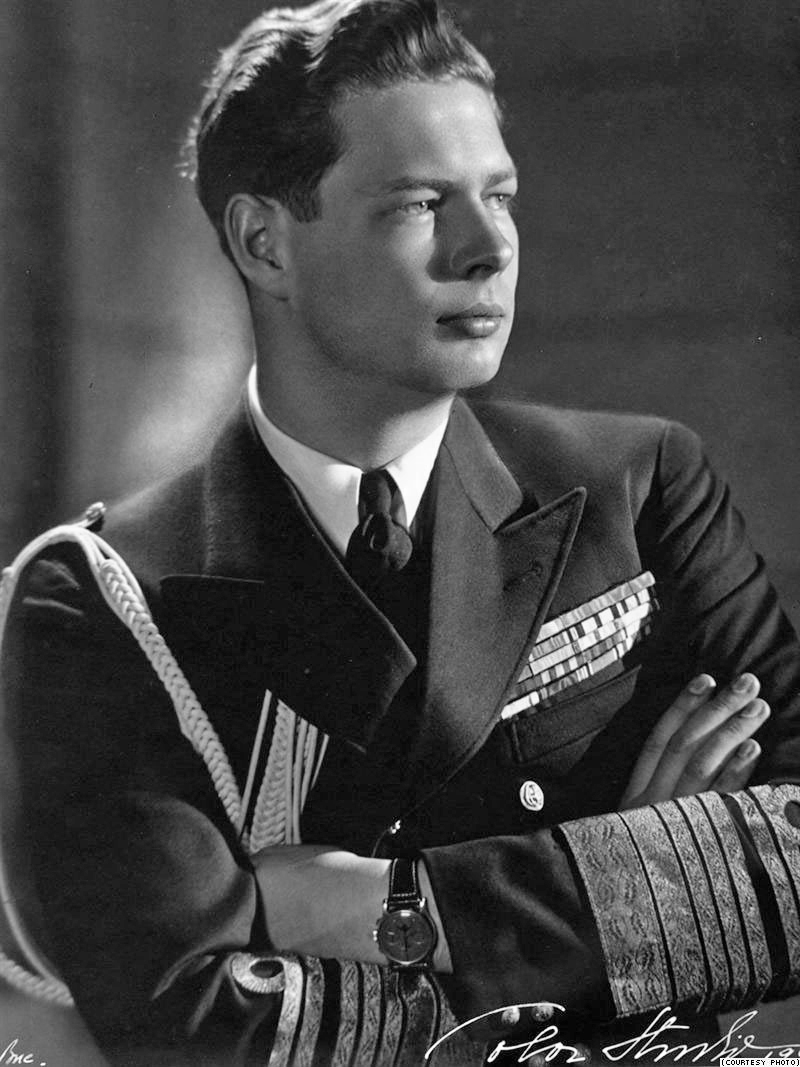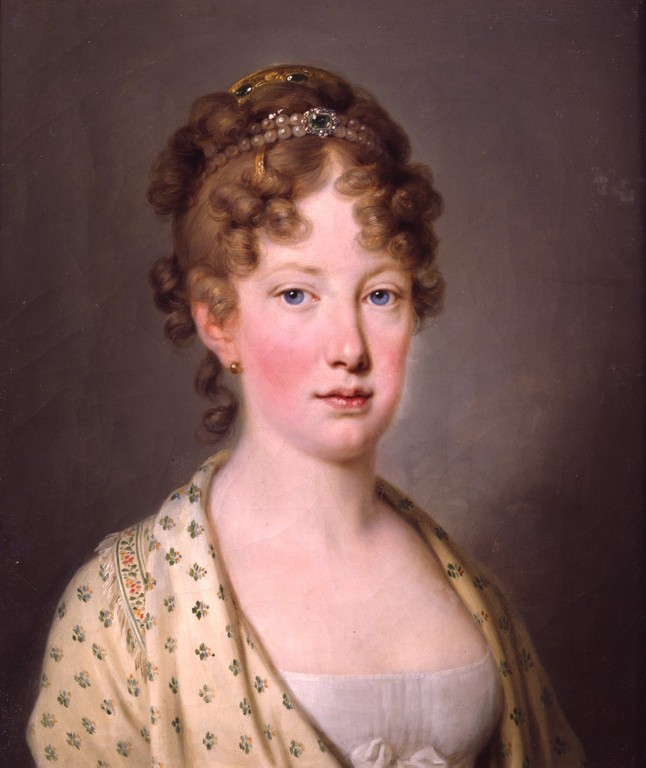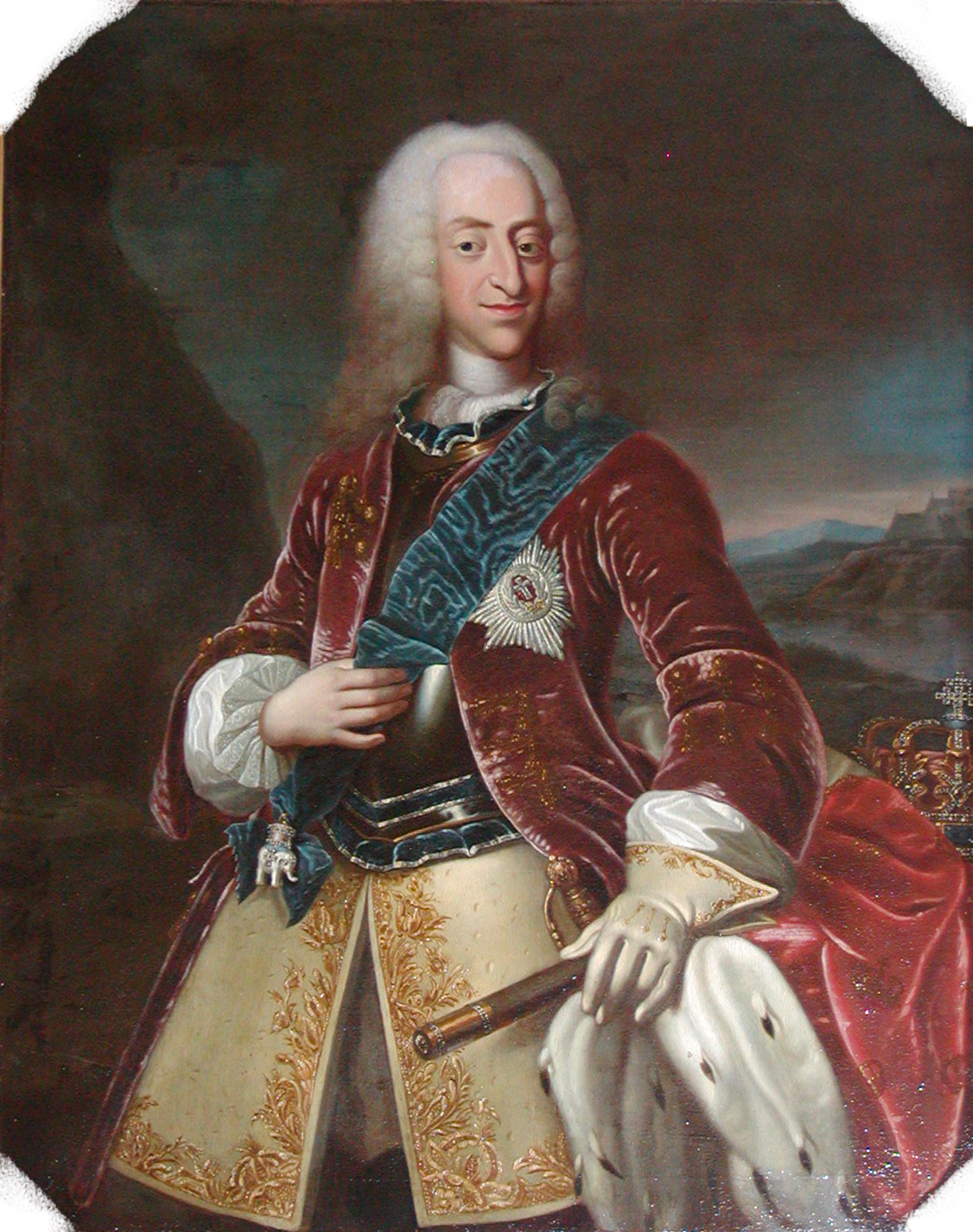© Unofficial Royalty 2024

King Oscar II of Sweden; Credit – Wikipedia
December 8, 1521 – Death of Christina of Saxony, Queen of Denmark, Norway and Sweden, wife of King Hans of Denmark, Norway, and Sweden, in Odense, Denmark; buried first in the Gråbrödre Klosterkirke in Odense, after her first burial site was demolished her remains were moved in 1805 to Saint Canute’s Cathedral in Odense, Denmark
In 1478, Christina married the future King Hans of Denmark, Norway, and Sweden. Christina and Hans had six children. In 1501, Hans began a long-term affair with Edel Jernskjæg, one of Christina’s ladies-in-waiting. The affair caused a scandal and a de facto termination of their marriage. From that time on, the marriage of Hans and Christina was one in name only. Christina was a devout Catholic (the Reformation had not yet occurred in Denmark) and she founded convents for the nuns of the Poor Clares in Copenhagen and Odense. In 1513, King Hans died from injuries after he was thrown from his horse. Christina survived her husband by eight years, dying aged 59, and was buried wearing the habit of a Poor Clares nun.
Unofficial Royalty: Christina of Saxony, Queen of Denmark, Norway and Sweden
December 8, 1542 – Birth of Mary, Queen of Scots at Linlithgow Palace in Scotland
The year before Mary’s birth, her grandmother Margaret Tudor died and her father James V saw no reason to keep the peace with England. When war broke out between England and France in 1542, it was inevitable that Scotland would go to war against England because of their treaty with France. When Henry VIII of England broke from the Roman Catholic Church, he asked James V of Scotland, his nephew, to do the same. James ignored his uncle’s request and further insulted him by refusing to meet with Henry VIII at York. Furious, Henry VIII sent troops against Scotland. In retaliation for the English raid into Scotland, James raised an army and attacked England. On November 24, 1542, the Battle of Solway Moss in Cumberland, England resulted in a decisive English victory. After the Battle of Solway Moss, James V fled to Falkland Palace in Scotland where he became ill and took to his bed. Overcome with grief and shame about the Battle of Solway Moss, James V lost the will to live. The news that his wife Marie of Guise had given birth to a daughter on December 8, 1542, did nothing to raise his spirits. James V, King of Scots died at Falkland Palace in Fife, Scotland on December 14, 1542, at the age of 30, and was succeeded by his only surviving, legitimate child, six-day-old Mary.
Unofficial Royalty: Mary, Queen of Scots
December 8, 1625 – Death of Christina of Holstein-Gottorp, Queen of Sweden, second wife of King Karl IX of Sweden, at Gripsholm Castle in Mariefred, Södermanland, Sweden; buried at Strängnäs Cathedral in Strängnäs, Sweden
In 1592, Christina married the future King Karl IX of Sweden as his second wife. They had four children including Gustavus II Adolphus the Great, King of Sweden. In 1611, Christina’s husband died. Christina was co-regent for her son Gustavus II Adolphus during his short regency. Christina was considered the real power behind the throne during the early years of her son’s reign. In 1622, Christina’s younger son Karl Philip died at the age of twenty after a serious illness. Christina was heartbroken after the death of her younger son, and she retired from public life and lived in seclusion. She survived her husband by fourteen years, dying at the age of 52.
Unofficial Royalty: Christina of Holstein-Gottorp, Queen of Sweden
December 8, 1708 – Birth of Francis Stephen, Duke of Lorraine, Grand Duke of Tuscany, Holy Roman Emperor at the Ducal Palace of Nancy, Duchy of Lorraine, now in France
In 1736, Francis Stephen married Maria Theresa of Austria, the only surviving child of Holy Roman Emperor Karl VI and the heir to the Habsburg empire. The couple had sixteen children but only eight survived childhood including two Holy Roman Emperors and Maria Antonia better known as Queen Marie Antoinette of France. Upon her father’s death in 1740, Maria Theresa became the sovereign ruler of the Habsburg territories in her own right of Austria, Hungary, Croatia, Bohemia, Transylvania, Mantua, Milan, Lodomeria and Galicia, the Austrian Netherlands, and Parma, and she was the only female to hold the position. However, Maria Theresa was unable to become the sovereign of the Holy Roman Empire because she was female. Maria Theresa’s right to succeed to her father was the cause of the eight-year-long War of the Austrian Succession. The Habsburgs had been elected Holy Roman Emperors since 1438, but in 1742 Karl Albrecht, Duke of Bavaria and Prince-Elector of Bavaria from the Bavarian House of Wittelsbach was elected Holy Roman Emperor Karl VII. He died in 1745 and via a treaty Maria Theresa arranged for her husband Francis Stephen, Duke of Lorraine to be elected Holy Roman Emperor as Franz I. Despite the snub, Maria Theresa wielded the real power and Francis Stephen was content to leave the act of reigning to his wife.
Unofficial Royalty: Francis Stephen, Duke of Lorraine, Grand Duke of Tuscany, Holy Roman Emperor
December 8, 1722 – Death of Elizabeth Charlotte (Liselotte) of the Palatinate, Duchess of Orléans, second wife of Philippe, Duke of Orléans, at the Château de Saint-Cloud, near Paris, France; buried at the Basilica of Saint-Denis, near Paris, France
Elizabeth Charlotte, called Liselotte, was the daughter of Karl I Ludwig, Elector Palatine. Her paternal grandmother was Elizabeth Stuart, the daughter of King James I of England and the granddaughter of Mary, Queen of Scots. Liselotte’s paternal aunt Sophia of the Palatinate, Electress of Hanover was the heiress presumptive to Queen Anne of Great Britain in accordance with the Act of Settlement 1701 but Sophia died two months before Queen Anne died. Upon Queen Anne’s death on August 1, 1714, Liselotte’s first cousin succeeded to the British throne as King George I of Great Britain. In 1670, Liselotte’s first cousin once removed, Henrietta of England, daughter of King Charles I of England, wife of Philippe, Duke of Orléans, and sister-in-law of King Louis XIV of France, died at the age of 26. In 1671, Liselotte became the second wife of Philippe, Duke of Orléans. Philippe and Liselotte had three children including Élisabeth Charlotte d’Orléans, the paternal grandmother of Maria Antoinette, Queen of France. After Philippe died in 1701, Liselotte was concerned that she would be forced to retire to a convent as stated in her marriage contract. However, her brother-in-law Louis XIV appreciated her and allowed Liselotte to keep her apartments at all the royal residences and retain her rank. Liselotte survived Philippe by twenty-one years, dying at age 70.
Unofficial Royalty: Elizabeth Charlotte of the Palatinate, Duchess of Orléans
December 8, 1793 – Execution by guillotine of Jeanne Bécu, Countess du Barry, mistress of King Louis XV of France, at the Place de la Révolution (now the Place de la Concorde), in Paris, France; buried at the Madeleine Cemetery in Paris, France
Jeanne Bécu, Countess du Barry was the last official mistress of King Louis XV of France, from 1768 until Louis XV died in 1774. After Louis XV’s death, Jeanne was banished from court and sent to the Abbey du Pont-aux-Dames. After a year, she was permitted to leave the abbey but banned from coming within 10 miles of Versailles. During her time as the King’s mistress, Jeanne had been gifted with a slave Zamor who remained in her household. Zamor later joined the Jacobin club, and upon discovering this, Jeanne dismissed him. In retaliation, Zamor gave testimony implying that Jeanne had assisted numerous aristocrats who had fled the French Revolution. Due to this testimony, Jeanne was arrested and charged with treason. A swift trial took place and she was found guilty and sentenced to death by guillotine.
Unofficial Royalty: Jeanne Bécu, Countess du Barry, mistress of King Louis XV of France
December 8, 1818 – Birth of Charles III, Prince of Monaco in Paris, France
Charles Honoré Grimaldi was born on December 8, 1818, in Paris, France. The famous Casino de Monte-Carlo was established and the construction of the Cathedral of Monaco began during his reign. In 1846, Charles married 18-year-old Countess Antoinette de Mérode, the daughter of Belgian politician Count Werner de Mérode. Although they sometimes were in Monaco, Charles and Antoinette preferred to live in France, where Antoinette had acquired the Château de Marchais in Aisne in northern France. The Château de Marchais still belongs to the Princely Family of Monaco. Charles and Antoinette had one child Albert I, Prince of Monaco.
Unofficial Royalty: Charles III, Prince of Monaco
December 8, 1818 – Death of Karl, Grand Duke of Baden at Schloss Rastatt in Rastatt, Grand Duchy of Baden, now in Baden-Württemberg, Germany; buried St. Michael’s Church in Pforzheim, Grand Duchy of Baden, now in Baden-Württemberg, Germany
Karl became Grand Duke of Baden upon the death of his grandfather Karl Friedrich, Grand Duke of Baden in 1811. In 1806, Karl had married Stéphanie de Beauharnais. They had five children but their only son died within a week of his birth. In 1817, with no living male heirs, and only one unmarried uncle to succeed him, Karl formally gave dynastic rights to his half-uncles – the sons of his grandfather Karl Friedrich from his second, morganatic, marriage. This kept the Grand Ducal throne of Baden from passing to Karl’s brother-in-law King Maximilian I Joseph of Bavaria. In 1818, Karl oversaw the passing of a new and much more liberal constitution. When Karl died in 1818 at the age of 32, the throne of Baden passed to his uncle, Ludwig I. However, through his daughters, his descendants include the former Kings of Romania and Yugoslavia, the Belgian royal family, the Luxembourg grand ducal family, and the Monaco princely family.
Unofficial Royalty: Karl, Grand Duke of Baden
December 8, 1826 – Birth of John Brown, personal attendant and favorite of Queen Victoria of the United Kingdom, in Crathie, Aberdeenshire, Scotland
John Brown served Queen Victoria of the United Kingdom as a ghillie at Balmoral (Scottish outdoor servant) from 1849 – 1861 and a personal attendant from 1861 – 1883. Prince Albert’s untimely death in 1861 was a shock from which Queen Victoria never fully recovered. In 1864, Victoria’s personal physician Sir William Jenner ordered that she ride all winter. Victoria refused to be accompanied by a stranger and so John Brown was summoned to Osborne House on the Isle of Wight with Victoria’s Highland pony. His duties soon encompassed more than leading a horse. Brown became known as “the Queen’s Highland Servant” who took his orders exclusively from the Queen. From then on, until his death nearly twenty years later, Brown was never far from Victoria’s side.
Unofficial Royalty: John Brown
December 8, 1875 – Death of Leopold III, Prince of Lippe in Detmold, Principality of Lippe, now in North Rhine-Westphalia, Germany; buried in the Mausoleum at the Büchenberg in Detmold
When his father in 1851, Leopold became sovereign Prince of Lippe. A year later, he married Princess Elisabeth of Schwarzburg-Rudolstadt but the couple had no children. In 1875, Leopold III, aged 54, died after suffering a stroke and was succeeded by his brother Woldemar. Leopold III had eight younger siblings. It appears that Leopold and his brother Woldemar were the only ones who married and neither had any children. This would eventually create a succession crisis. After the death of Leopold’s brother Alexander, who succeeded his brother Woldemar, and the extinction of the Lippe-Detmold line, the throne of the Principality of Lippe went to Count Leopold of Lippe-Biesterfeld who would be the last Prince of Lippe.
Unofficial Royalty: Leopold III, Prince of Lippe
December 8, 1907 – Death of King Oscar II of Sweden and Norway at the Royal Palace in Stockholm, Sweden; buried at Riddarholmen Church in Stockholm, Sweden
Oscar was the third of the four sons of King Oscar I of Sweden and Norway. In 1857, he married Princess Sophia of Nassau and the couple had four sons. Upon his father’s death in 1859, Oscar became Crown Prince and heir of his elder brother King Karl XV, who had no living male heirs. Oscar became King of Sweden and Norway when his brother died in 1872. In 1905, King Oscar II formally renounced his claim to the Norwegian throne, with Sweden finally recognizing Norway as an independent constitutional monarchy. Oscar’s great-nephew, Prince Carl of Denmark (a grandson of Oscar’s elder brother King Karl XV), was elected King of Norway, taking the name Haakon VII. Ironically, Haakon’s son Olav married the daughter of Oscar’s son Prince Carl of Sweden, and today it is Oscar’s great-grandson, King Harald V, who sits on the Norwegian throne. Through his children, Oscar II’s descendants currently occupy the thrones of Sweden, Norway, Belgium, and Luxembourg. Soon after the end of the union with Norway, King Oscar’s health began to decline. He died at the age of 78.
Unofficial Royalty: King Oscar II of Sweden
December 8, 1915 – Death of Julia Abercromby, Baroness Abercromby, Lady of the Bedchamber to Queen Victoria, at Camperdown House in Dundee, Scotland
Born The Honorable Julia Haldane-Duncan, she was the eldest child of Adam Haldane-Duncan, 2nd Earl of Camperdown and married George Abercromby, 4th Baron Abercromby. In April 1874, Julia was appointed a Lady of the Bedchamber to Queen Victoria and served until March 1885. She was an accomplished painter and was asked to paint the first official portrait of Queen Victoria for the National Portrait Gallery. She painted a watercolor portrait, based on an original painting by von Angeli. It was one of Queen Victoria’s favorite portraits of herself.
Unofficial Royalty: Julia Abercromby, Baroness Abercromby
December 8, 1942 – Death of Prince Eitel Friedrich of Prussia, son of Wilhelm II, German Emperor, at Villa Ingenheim in Potsdam, Germany; buried at the Antique Temple in Sanssouci Park, Potsdam, Germany
In 1906, Eitel Friedrich married Duchess Sophie Charlotte of Oldenburg. The couple had no children. The marriage was never a happy one as Eitel Friedrich was continually unfaithful and the couple divorced in 1926. After World War I and the end of the German Empire, Eitel Friedrich remained active in monarchist circles and supported the Stahlhelm paramilitary organization. He was later one of the founders of the Harzburg Front, a radical right-wing alliance formed to present unified opposition to the government of Chancellor Heinrich Brüning. However, Eitel Friedrich was an outspoken opponent of Hitler. When Eitel Friedrich died at the age of 59 in 1942, the Nazi regime refused to allow him any military honors at his funeral and forbade anyone to participate wearing their uniforms. Despite this, many of his former comrades, all in civilian clothes, participated in his funeral.
Unofficial Royalty: Prince Eitel Friedrich of Prussia
December 8, 1956 – Death of Princess Marie Louise of Schleswig-Holstein, daughter of Princess Helena of the United Kingdom and granddaughter of Queen Victoria, at 10 Fitzmaurice Place, Berkeley Square, London, England; buried at the Royal Burial Ground, Frogmore in Windsor, England
In 1890, Marie Louise married Prince Aribert of Anhalt. However, the marriage was unsuccessful. In 1900, the marriage was dissolved by Marie Louise’s father-in-law, at her husband’s insistence. It has been speculated that the marriage was never consummated and that Aribert was homosexual, and had been caught in a delicate situation by either his wife or his father. In her memoirs, Marie Louise states that even though her marriage was annulled, she maintained the vows she had made at her wedding, and would never remarry. After World War II, Marie Louise and her unmarried sister Helena Victoria moved to 10 Fitzmaurice Place in Berkeley Square, London, England. She continued participating in most family functions and remained very close to King George VI and his family. Following her sister’s death in 1952, one of her last major appearances was the coronation of Queen Elizabeth II in 1953. At the suggestion of Queen Elizabeth II, she began to write her memoir, My Memories of Six Reigns, published in 1956. Soon after the book was published, Princess Marie Louise died at the age of 84.
Unofficial Royalty: Princess Marie Louise of Schleswig-Holstein
This article is the intellectual property of Unofficial Royalty and is NOT TO BE COPIED, EDITED, OR POSTED IN ANY FORM ON ANOTHER WEBSITE under any circumstances. It is permissible to use a link that directs to Unofficial Royalty.









